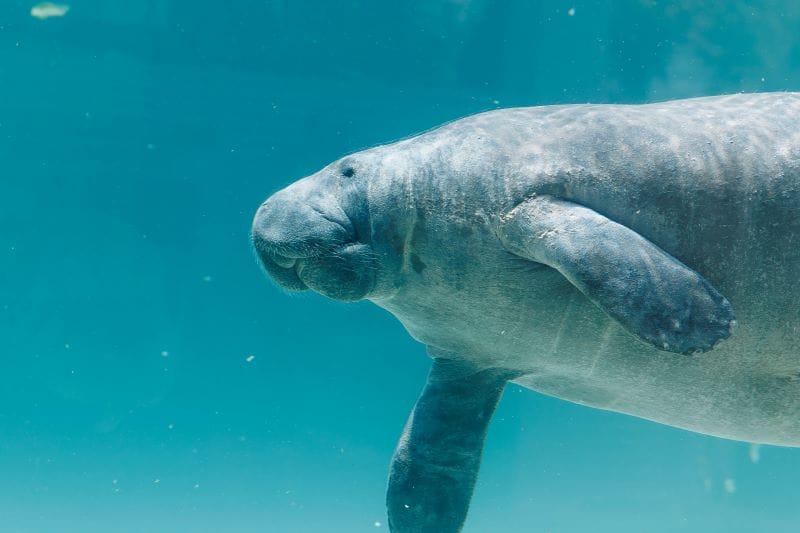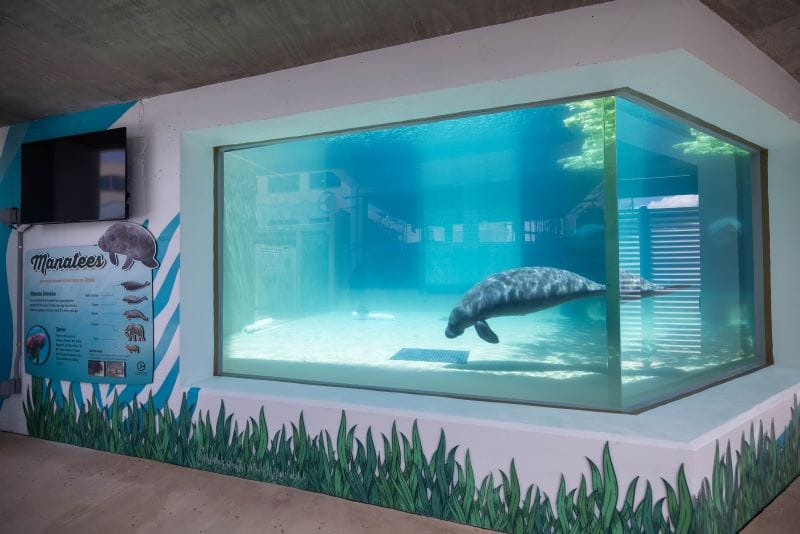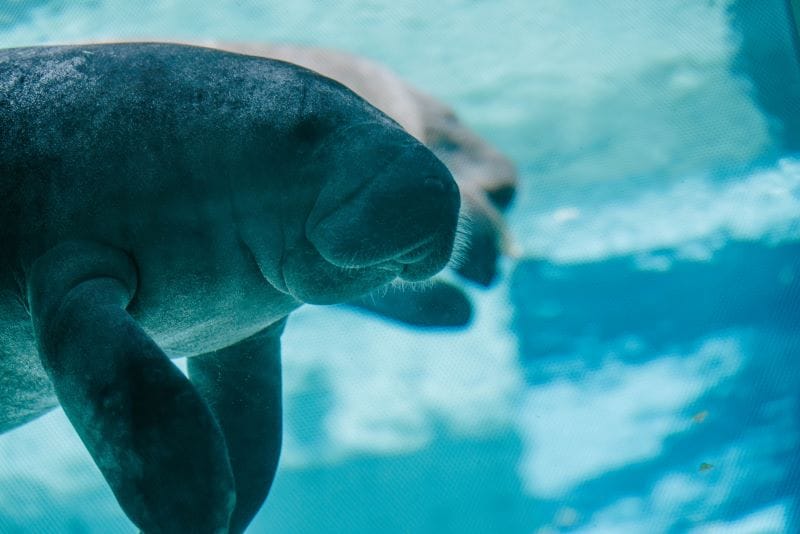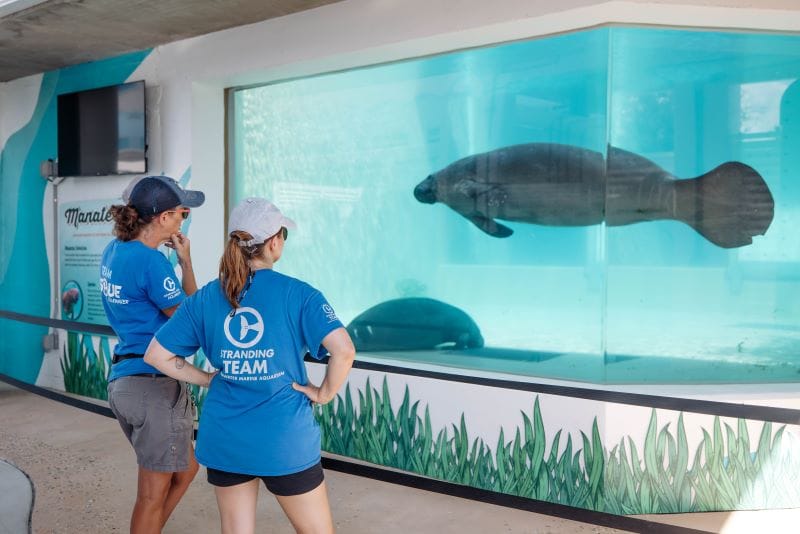Clearwater Marine Aquarium: Rescuing, Rehabilitating and Releasing Tampa Bay’s Gentle Giants
It takes a village to raise a child – a familiar adage for parents. The same holds true for manatee rescue and rehabilitation, and the Clearwater Marine Aquarium (CMA) is part of that village for Tampa Bay Area manatees.
As of August 12, the Clearwater Marine Aquarium Manatee Rehabilitation Center (MRC) is now open! Dr. Buddy Powell, CMA’s chief zoological officer and research institute director, spoke with Tampa Bay Parenting about CMA’s ongoing efforts to rehabilitate manatees so that they can be released into and thrive within their natural habitats.
“I’ve gone full circle: born in Clearwater, growing up in Crystal River and having worked all over the world,” says Dr. Powell, who has worked with the likes of Jacques Cousteau. “This is a continuation of the work I started when I was younger. Taking care of manatees in Clearwater is the fulfillment of a personal dream.”
Nutrition Facts
CMA’s work is integral to manatees because, although the manatee population has grown, many manatees are dying from starvation as they succumb to red tide. Herbivorous manatees need sea grass for survival.
Dr. Powell explains: “Nutrients in the waters have been feeding an algae bloom which, in turn, clouds the water. Cloudiness in the water decreases the amount of light hitting the bottom, so seagrass volume has declined.” Taking our children to visit the CMA and its new MRC is more than filling time; it may very well be a call to action.

Rescue & Rehab
Yeti and Zamboni are the center’s first patients. Both rescued by the Florida Fish and Wildlife Commission, they were initially taken to ZooTampa for critical care. At the time of rescue, Yeti was 205 centimeters long and weighed 365 pounds. He’s grown to 216 centimeters and 495 pounds. Zamboni measured 200 centimeters and weighed 306 pounds at the time of rescue. He’s now 208 centimeters and 440 pounds.
The center is a significant step forward in manatee conservation, which includes rehabbing manatees with boat strike wounds, ingestion of foreign objects, entanglements and cold stress syndrome.
CMA’s rehabilitation center is equipped with technologies like ozone treatment and medical habitats with false bottoms. Its design is anchored in ensuring manatee patients’ comfort and well-being.
Dr. Powell added, “We are not your typical aquarium. We are really a working hospital with many species—including dolphins, sea turtles and otters. We want people to see the work that we do because it is so important.”

View & Release
Guests can view manatees through an underwater viewing area equipped with barriers to limit human interaction. The team of expert care providers working with the manatees includes veterinarians, research scientists and field assistants.
Their shared goal is preparing the animals for their eventual winter release. Accordingly, guests are asked to maintain a quiet atmosphere and refrain from using flash photography.
Says Joe Handy, CEO of Clearwater Marine Aquarium: “We are the first responders of the ocean, from research to monitoring, and now rehabilitation. From international waters like Belize, Cuba and the Dominican Republic, to our own local Florida waters, we are ready to protect this keystone species.”
Upon expansion of its surgical suite, CMA will accept manatee critical care cases, which will alleviate critical care bed space at other locations. Beyond viewing manatee care, visitors will learn about manatees’ plight and what they can do to protect and save manatees.
Some CMA residents are permanent, such as some of the aquarium’s dolphins that won’t be released because of deafness or other disabilities. The overarching goal remains releasing animals with the full potential for survival in their natural habitats so that they can contribute to their species’ population growth.

Global Reach
CMA’s work and educational experiences extend far beyond the Tampa Bay area, and that is especially near to Dr. Powell’s heart. “We work on North Atlantic right whales, a highly endangered species that only comes off the coast of Florida and Georgia to have babies,” he says. “We work on sea turtles, protecting their beaches not only in Clearwater but also abroad. And we are building another rescue and rehab facility in Belize.”
Visiting CMA means contributing to robust marine life on a global scale. Dr. Powell believes that CMA’s global research and hands-on care are intertwined. “Through studying manatees both in the wild and within our facility, we gain invaluable insights into their needs and behaviors, empowering us to craft more effective conservation strategies.”
Through a blend of direct and indirect actions, we can all promote manatees’ well-being and help preserve their habitats. What is good for our area’s manatees, such as water quality, is also good for our area’s human residents – like our children.
Dr. Powell and his colleagues hope that guests leave the Clearwater Marine Aquarium feeling changed and ready to act on new knowledge.
Manatee Fun Facts
- They evolved from elephants.
- They have fingernails on their flippers from when their ancestors were semi-terrestrial.
- Manatees were originally protected because of hunting in the 1800s.
Visit:
Clearwater Marine Aquarium
249 Windward Passage / Clearwater, FL
(727) 441-1790
Originally published in the September 2024 issue of Tampa Bay Parenting Magazine.


